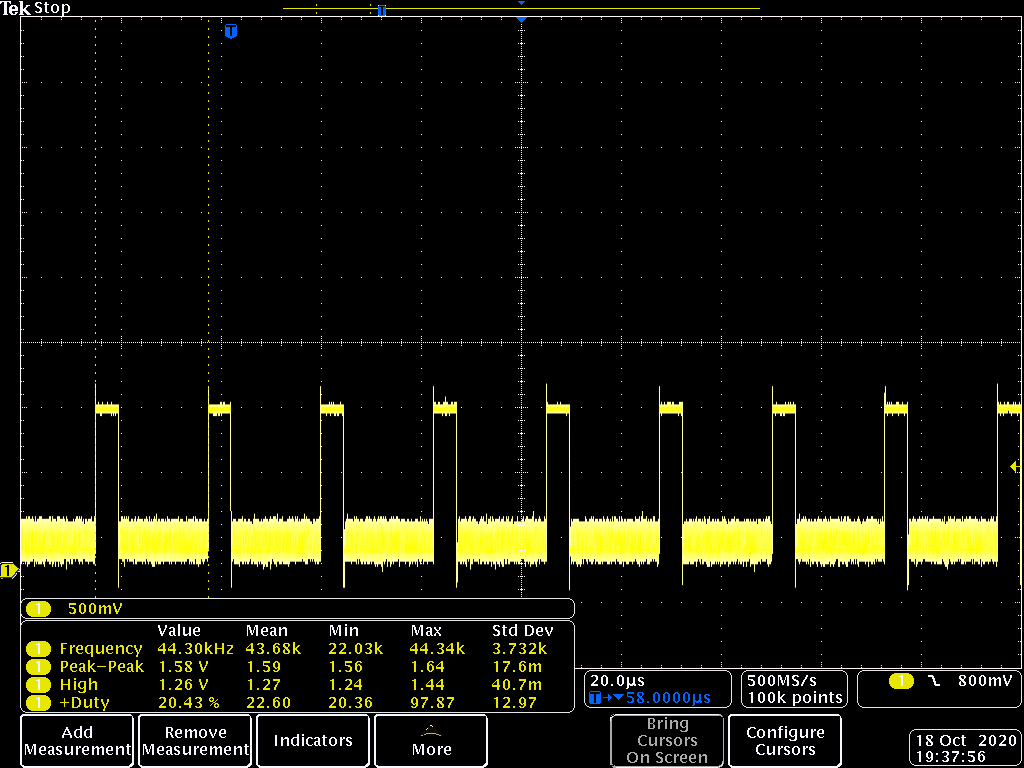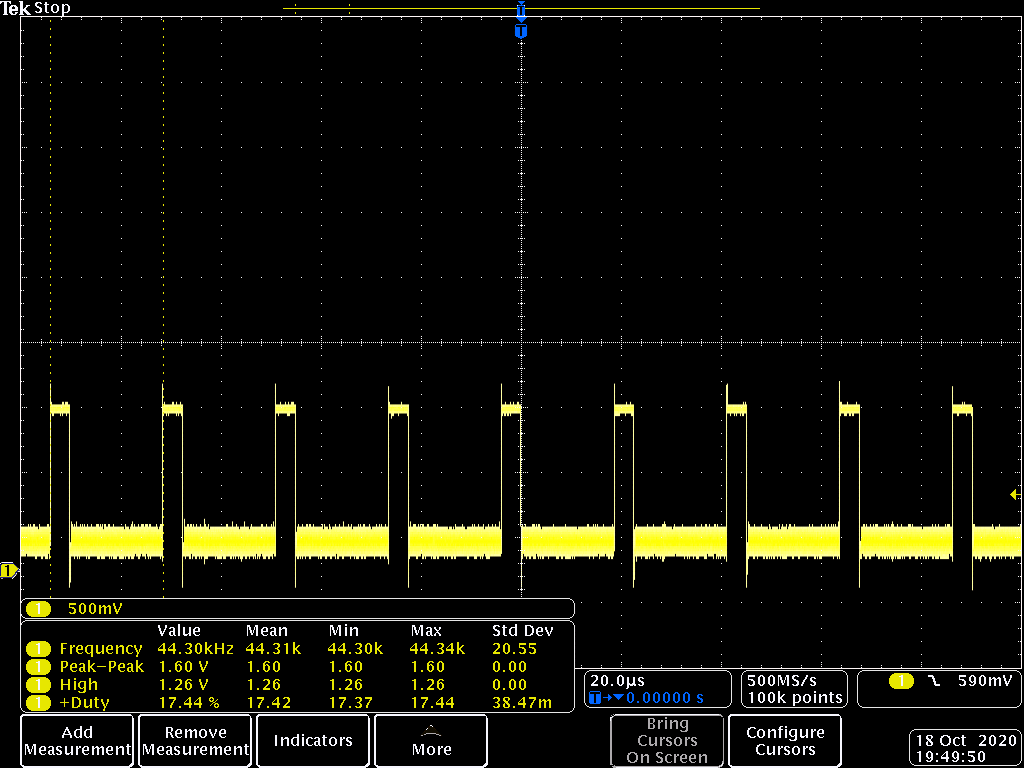xrk
 lvl.2
Germany
Offline
|
I made some further progress. I built a short extension test unit using one female and one male USB-C breakout board and connected them with roughly 10 cm of ribbon cable. I soldered a 0.1" pitch double row pinheader in-between in order to be able to easily hook scope probes and observe the signals during Ocusync camera operation.



I was surprised to learn that the Ocusync unit still continued to work with that contraption in between, as the ribbon cable must be one of the worst choices for high-speed signals.
Even, with the 1m scope cable hanging on the wires, the image transmission continued to work without any problems (I tested with the scope all the pins).
Surely this sort of an extension must create significant amount of noise and as such is not what you want in your drone near other radio equipment that should work over longer range.
In order to minimize the effort with the labor intensive micro-coax cabling, I thought to look at the signal shapes in all the lines in order to use micro-coax only on lines carrying high-speed signal and normal wire on all other lines.
From Ocusync camera pin 5 (USB-C B11), 6 (B10), 7 (A2), 8 (A3), 15 (B5) and 16 (B8) I could only measure 0 V signal.
Here are the pins, where I could see a signal.
Pin 1 (B2, 2 images):
Pin 7 (1)

Pin 7 (2)

Note that the signal of pins 1 to 4, 9 and pin 10 all look very similar.
Pin 2 (B3, 2 images):
Pin 8 (1)

Pin 8 (2)

I plotted also both (Pin 1 and Pin 2 together and zoomed in heavily). Here are 8 images showing that the highest frequency component is roughly 30 MHz in these lines (also the highest I found across all lines looked at). Pin 1 (B2) is plotted in channel 1 in yellow, Pin 2 (B3) in channel 2 in cyan:

another view:

notice smaller chirps in Pin2/B3 signal.
Let's zoom in:

another view:

Zooming in even further:

and more:



Pin 3 (B6, 2 images):
 
Pin 4 (B7, 2 images):
Pin 11 (1)

Pin 11 (2)

Pin 9 (A11, 2 images, zoomed out and zoomed in):
 
Pin 10 (A10, 2 images):
 
Pin 11 (A7):

Pin 12 (A8, 3 images, not purely binary signal, has multiple levels):
Pin 16 (1)

Pin 16 (2)

Pin 16 (3)

Pin 13 (A5) - short pulses during startup with 376 kHz, then constant 2.7 V.
Pin 14 (USB-C A6): const 2.7 V
Pin 17 (not connected in camera to a cable)
Pin 18 (A4) constant voltage, roughly 1.8 V
Pin 19 (B9) constant voltage, roughly 1.9 V
Pin 20 (B4 & A9 are connected in camera), briefly after power-up comes up to constant 3.7V
From the slightly longer than 16 ms frame that can be observed from the above scope screenshots, I take that the camera runs at 60 frames per second. We can also observe 44 kHz signal, which equates to roughly 720 lines @60Hz. All makes sense now. So the 30 MHz signal above, are likely the analog line scans of the camera sensor. I further assume the three pairs make up for red, green and blue channels.
If the maximum frequency across the wire is 30 MHz, the extension might not even need micro-coax, but might work with shielded data cable as well.
I wonder why lot of wires did not show any signals on my scope though. As DJI has spend an micro-coax cable for them in their wiring, they are likely not just for fun there. I might try to desolder in my ribbon cable contraption some of them to see if the camera still works on OcuSync unit after this.
|
-
Pin 4

-
Pin 5 (1)

-
Pin 5 (2)

-
Pin 6 (1)

-
Pin 6 (2)

-
Pin 14 (1)

-
Pin 14 (2)

|
